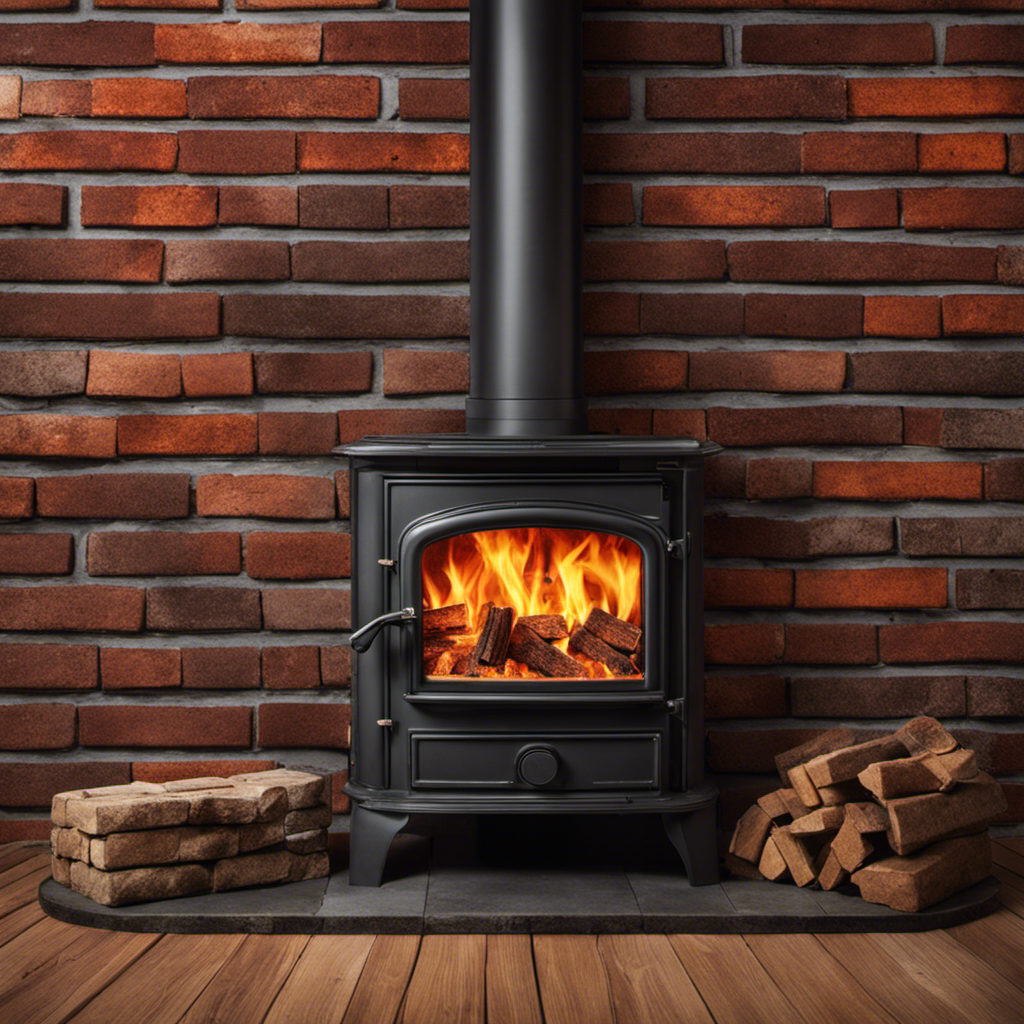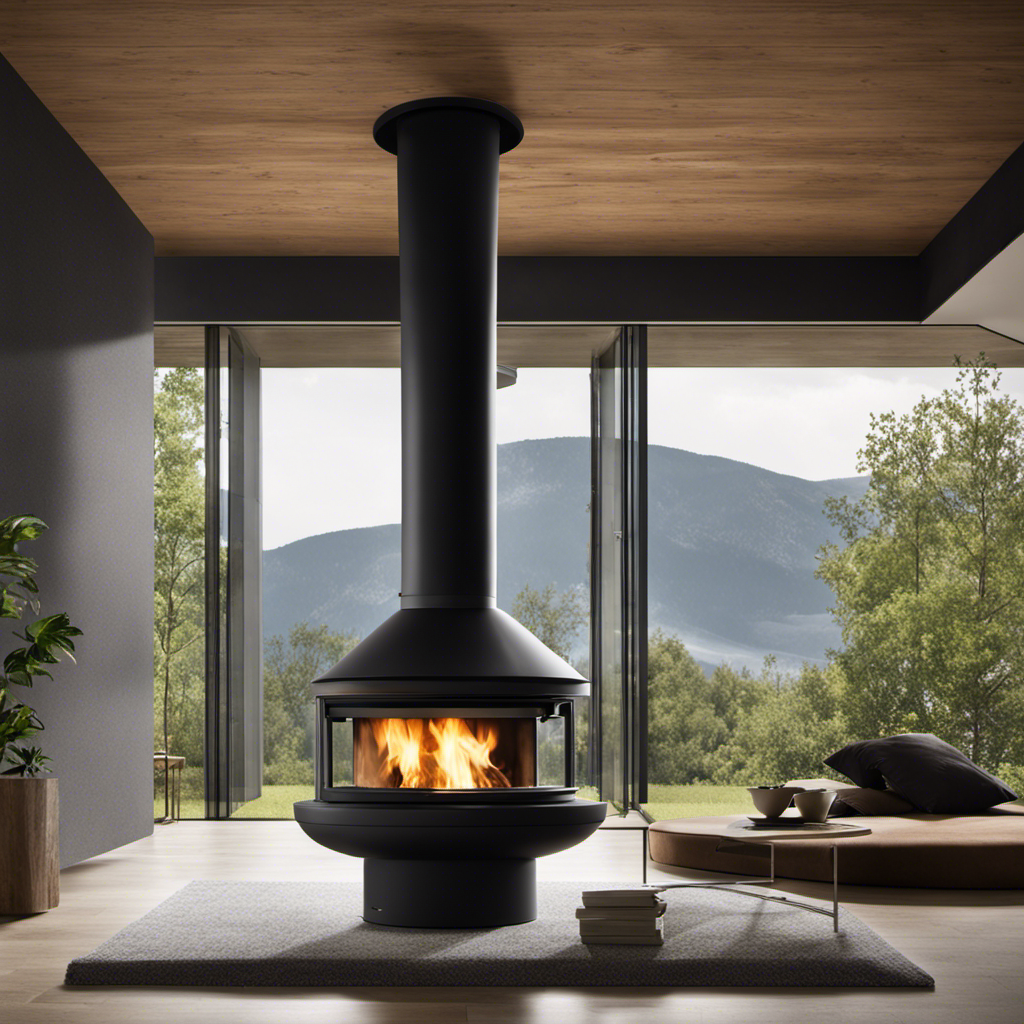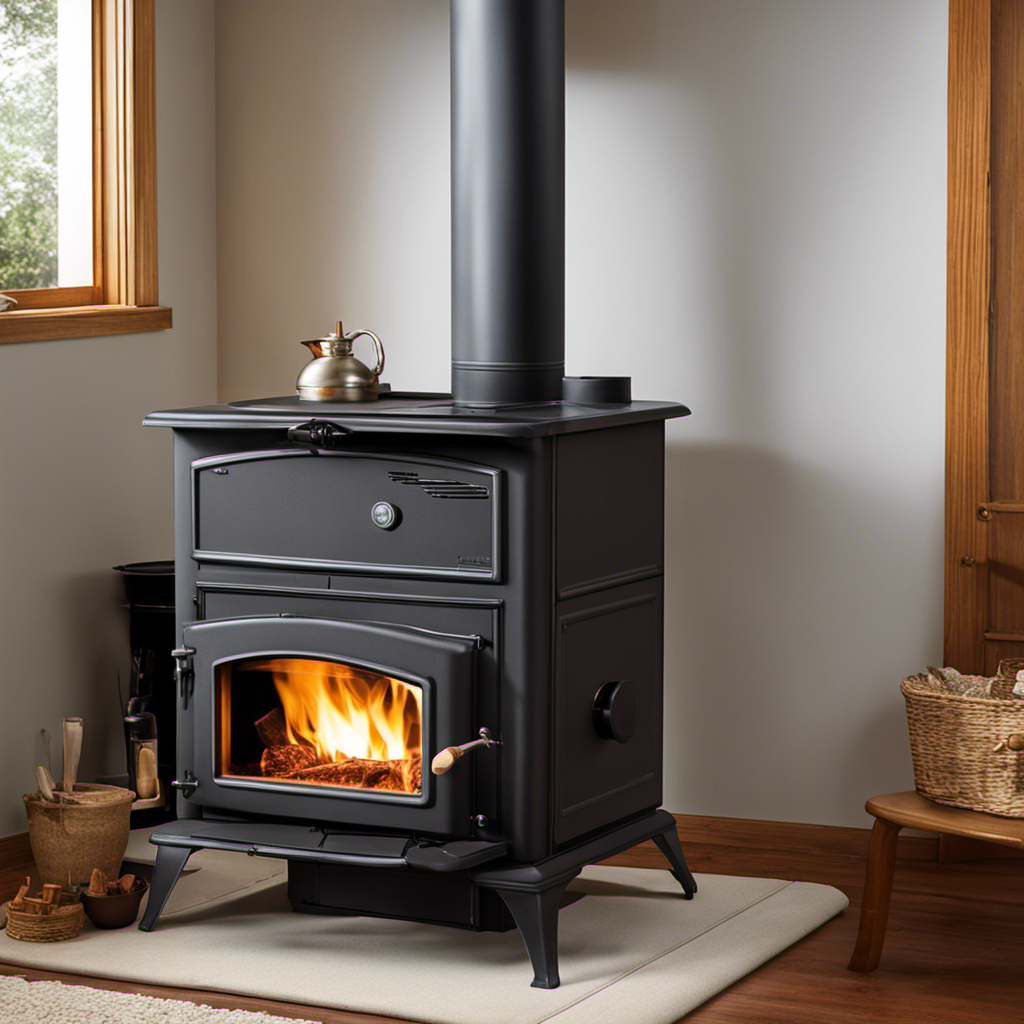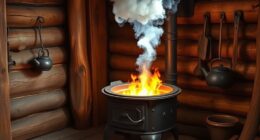As a wood stove owner, I have come to understand the importance of fire bricks in maximizing heating efficiency and maintaining safety. However, it raises the question: when should they be replaced? Similar to other parts, fire bricks can wear down over time.
In this article, I’ll walk you through the signs of wear and tear to watch out for, so you can ensure your wood stove continues to provide optimal insulation and combustion.
Let’s dive in!
Key Takeaways
- Cracked or damaged fire bricks in a wood stove can compromise its efficiency and safety.
- Promptly addressing cracked bricks is necessary to maintain optimal performance and a safe environment.
- Refractory cement is a durable and cost-effective option for replacing fire bricks.
- Regular maintenance and inspection, including cleaning and replacing components, is crucial for the optimal performance of a wood stove.
Signs of Wear and Tear
I can tell that my fire bricks are starting to show signs of wear and tear due to the excessive heat and usage in my wood stove. Fire bricks are specifically designed to withstand high temperatures and provide insulation in wood stoves.
However, over time, various factors can cause brick deterioration. One common cause is the repeated exposure to extreme heat, which can lead to the expansion and contraction of the bricks, resulting in cracks and breakage. Additionally, the constant heating and cooling cycles can cause the bricks to lose their structural integrity.
The benefits of using fire bricks in wood stoves are significant. They help to retain heat, ensuring efficient and consistent burning of the wood. Moreover, fire bricks protect the inner walls of the stove from direct contact with the flames, reducing the risk of damage and prolonging the lifespan of the stove.
Cracked or Damaged Bricks
Someone might think that cracked or damaged bricks in a wood stove are not a big deal, but they can actually compromise the stove’s efficiency and safety. When the bricks in a wood stove start to crack or show signs of damage, it is important to address the issue promptly. Not only can cracked bricks affect the stove’s ability to retain heat, but they can also allow smoke and harmful gases to escape into your home. Replacing the damaged bricks is necessary to ensure the stove’s optimal performance and to maintain a safe environment. Fortunately, there are cost-effective options available for replacing bricks in a wood stove. By considering these options, you can keep your wood stove operating efficiently and safely without breaking the bank.
| Pros | Cons | Cost-effective options |
|---|---|---|
| Durable | Time-consuming | Refractory cement |
| Insulating | Labor-intensive | Fire brick panel |
| Easy to install | Expensive | Ceramic fiber board |
Loss of Insulation Efficiency
Replacing damaged fire bricks in a wood stove is crucial to prevent loss of insulation efficiency and maintain optimal performance. When these bricks become cracked or damaged, they can allow heat to escape, leading to increased energy consumption and reduced heat output. Here are three reasons why replacing damaged fire bricks is important:
-
Reducing energy consumption: Cracked or damaged fire bricks can cause the wood stove to work harder to maintain the desired temperature. By replacing these bricks, you can ensure that the stove operates efficiently, reducing energy consumption and saving on heating costs.
-
Minimizing heat loss: Damaged fire bricks can allow heat to escape from the wood stove, resulting in less heat being distributed throughout the room. By replacing these bricks, you can minimize heat loss and ensure that the stove efficiently heats your space.
-
Maintaining optimal performance: Fire bricks play a crucial role in insulating the wood stove, allowing it to reach and maintain high temperatures for effective heating. By replacing damaged bricks, you can maintain the stove’s optimal performance and ensure that it operates at its best.
Excessive Smoke or Poor Combustion
Experiencing frequent instances of excessive smoke or poor combustion can indicate a need for adjusting the airflow in the wood stove. When the airflow isn’t properly balanced, it can lead to inefficient combustion and an increase in smoke production.
To troubleshoot smoke issues, start by checking the air intake and exhaust vents for any obstructions. Make sure the damper is open to allow sufficient airflow.
If adjusting the vents and damper doesn’t solve the problem, it may be necessary to clean the stove and chimney to remove any built-up creosote or debris that could be affecting the combustion process.
Regular maintenance and inspection are crucial to ensure optimal performance and safety of your wood stove. Properly maintained wood stoves can provide efficient heating and reduce the risk of smoke-related issues.
Regular Maintenance and Inspection
I make sure to schedule regular maintenance and inspection of my wood stove to ensure it continues to operate efficiently and safely.
Here are three important steps to consider when maintaining your wood stove:
-
Cleaning is crucial: Regularly clean the interior and exterior of your wood stove to remove any ash, soot, or debris. This will prevent blockages and ensure proper airflow, resulting in efficient combustion and reduced smoke emission.
-
Proper storage of firewood: To optimize burning efficiency, it’s essential to store firewood correctly. Make sure to stack it in a dry, well-ventilated area, off the ground, and covered with a tarp. This will keep the wood dry and prevent the growth of mold or rot, ensuring optimal burning efficiency.
-
Inspect and replace components: Regularly inspect the gaskets, door seals, and fire bricks in your wood stove. These components can deteriorate over time and affect the stove’s performance. Replace any damaged or worn-out parts to maintain efficiency and safety.
Frequently Asked Questions
How Often Should Fire Bricks Be Replaced in a Wood Stove?
Fire bricks in a wood stove should be replaced when they show signs of damage or deterioration. Typically, fire bricks can last for several years with proper care and maintenance.
Can I Use Regular Bricks Instead of Fire Bricks in My Wood Stove?
Regular bricks should not be used in a wood stove as they cannot withstand the high temperatures. Fire bricks are specifically designed for this purpose, offering benefits like heat retention and protection. Proper maintenance ensures their longevity and efficient performance.
Are There Any Alternatives to Replacing Fire Bricks in a Wood Stove?
There are alternatives to replacing fire bricks in a wood stove, but they may not provide the same benefits. Fire bricks are designed to withstand high temperatures and retain heat, ensuring efficient combustion and preventing damage to the stove.
Can I Repair Cracked or Damaged Fire Bricks Instead of Replacing Them?
Repairing fire bricks in a wood stove can be a cost-effective solution, but it has its pros and cons. While it can save money, it may not provide a long-term fix. Consult a professional for guidance.
What Are the Consequences of Not Replacing Fire Bricks in a Wood Stove?
Neglecting fire brick maintenance in a wood stove can lead to several consequences. Signs that fire bricks need replacement include cracks, crumbling, or significant damage. It’s crucial to address these issues promptly to ensure safe and efficient operation.
Conclusion
In conclusion, replacing fire bricks in a wood stove is crucial for maintaining its efficiency and safety.
By regularly inspecting for signs of wear and tear, such as cracks or damage, and ensuring proper insulation, you can avoid excessive smoke and poor combustion.
Remember, regular maintenance is key to keeping your wood stove in optimal condition.
As the saying goes, ‘A stitch in time saves nine,’ and the same applies to fire brick replacement in wood stoves.











